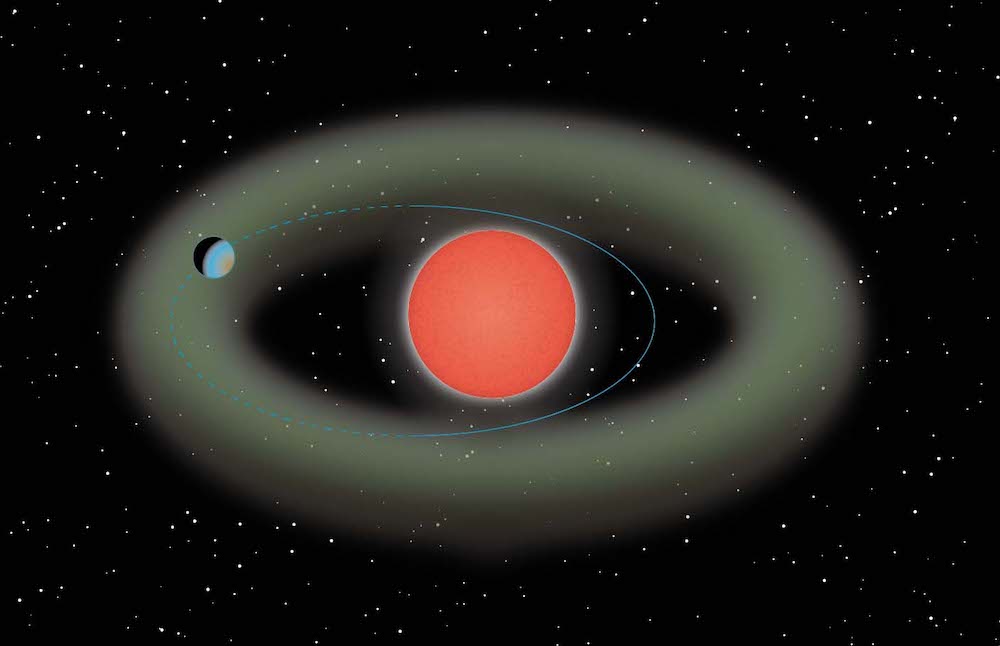Astronomers find super planet Earth in the habitable area of a red dwarf star! The beauty is that it is only 37 light years away!
So far, astronomers have discovered more than 5,000 planets orbiting other stars. The planets that were found were similar to the planets in the Solar System, but many were of different types. For example, there is a hot Jupiter which is similar to Jupiter but has a very high temperature because it is close to a star. There is another super-Earth planet, a rocky planet that is more massive than Earth, and a mini-Neptune that is similar to Neptune but smaller.
The planet found is a super planet Earth and, interestingly, this planet orbits a red dwarf “not far” from the Sun. It could be said to include neighbors in the Sun’s environment.
Observation of the red dwarf system
Red dwarf stars are the most common stars found. Of the entire stellar population of the Milky Way, 75% are red dwarfs. Stars like this are smaller, cooler, fainter than the sun. However, red dwarfs have a much longer life than the sun.
Hence, red dwarfs are ideal targets for the search for planets that could support life like Earth.
The problem is that red dwarfs are cold stars with a surface temperature below 4000 K. Stars like this don’t emit as much visible light as other types of stars. This means that red dwarf stars are very faint stars. It is not easy to find planets in red dwarfs in visual or visible wavelengths.
Not so if we observe it with instruments that work at infrared wavelengths.
Red dwarf stars will appear bright in the infrared.
In order for astronomers to observe red dwarf stars in the Universe, special instruments have been developed that work at infrared wavelengths. To this end, astronomers developed the Infrared Doppler (IRD) spectrograph mounted on the Subaru telescope in Hawaii. With IRD, astronomers can detect the slightest wobble at the speed of a star.
As a result, they found a super-Earth exoplanet in a red dwarf!
Ross 508 system
The super-Earth, observed with the IRD spectrograph on the 8-meter Subaru telescope, is located in a nearby star.
The Ross 508 system. This is the name of the star with the newly discovered super-Earth planet. The star Ross 508 is located 37 light years from Earth in the constellation of the Serpent, aka the serpent that is in the arms of Ophiuchus, the bearer of the Serpent. The size and mass of the star Ross 508 is only 20% of the size and mass of the Sun, with a temperature of 3071 K.
In this system, he found a planet that is four times as massive as Earth. The distance to the star is also very close. Only 0.05 times the distance of the Earth from the Sun or only 7.9 million km from the star Ross 508.
After the name of its parent star, the planet is called Ross 508b. The question is whether the found planets have any signs of life.
For a planet to have signs of life like on Earth, it must be at some distance from its parent star. Hence, the location must be right in an area where the temperature is warm enough to keep the water in liquid form on the surface. Scientists call this area the habitable zone.
And it turns out…. planet Ross 508b is at the inner limit of the habitable zone!
A team of astronomers led by Professor Bun’ei Sato of the Tokyo Institute of Technology also discovered that the planet Ross 508b has an elliptical or oval orbit. And apparently, some of its orbits intersect or traverse the habitable area.
With the Subaru telescope, astronomers can learn more about the existence of water or life on Ross 508b. Astronomers can also perform better analyzes to look for planetary candidates in red dwarf stars.
Interesting facts:
One year on planet Ross 508b equals 11 Earth days. This means you celebrate your birthday more often on planet Ross 508b and live longer than on Earth.
Source: This article is a re-released version of Indonesian Space Scoop Universe Awareness Edition. Space Scoop Indonesian edition translated by Paradise.


![The 225th day of the Ukrainian war. Latest information [papildināts 20:42] The 225th day of the Ukrainian war. Latest information [papildināts 20:42]](https://zinas.nra.lv/_mm/photos/2022-10/860px/580797_b785c65587.jpg)